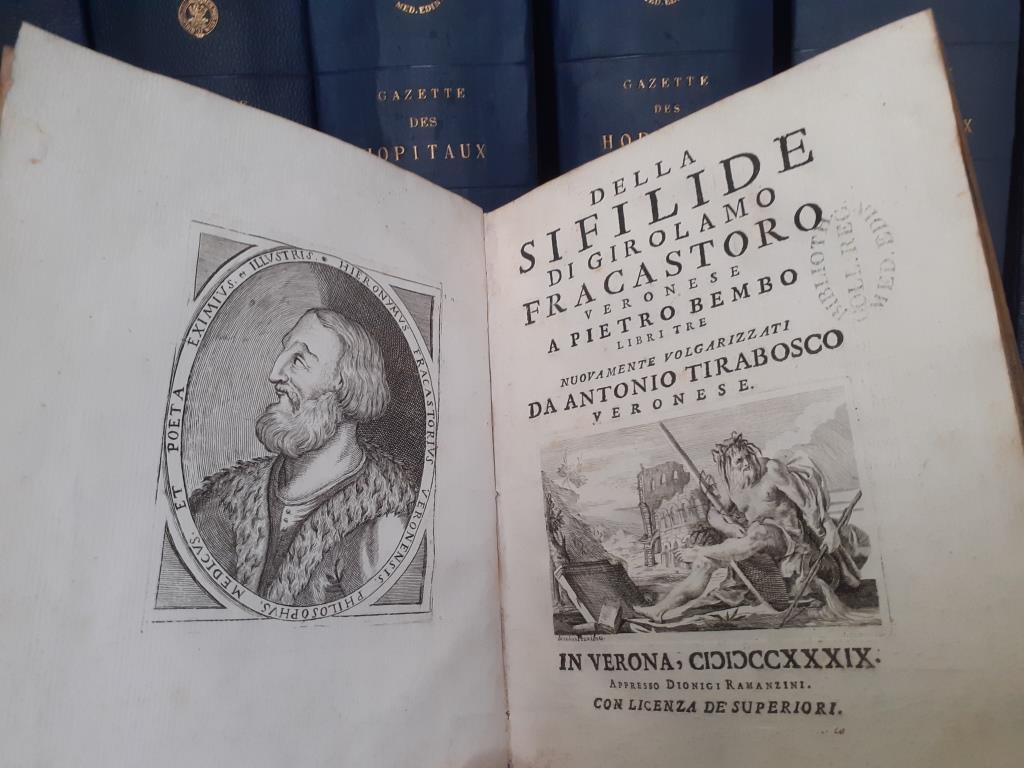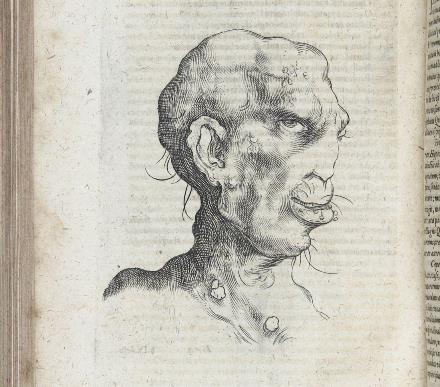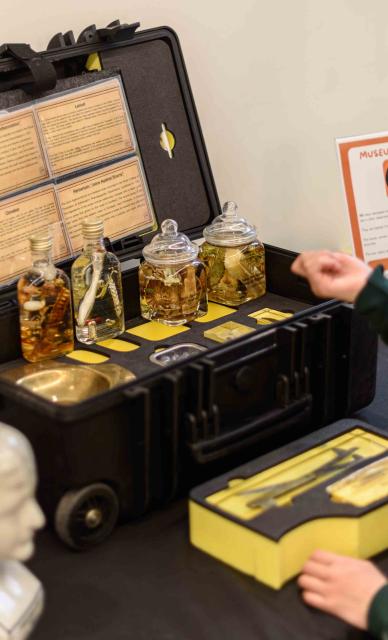Support us
As a charity we rely on your donations to fund our free exhibitions, school activities and online resources
Empowering medical excellence, shaping healthcare futures.
Girolamo Fracastaro was a Veronese doctor whose medical poem Syphilus sive morbus gallicus gave syphilis its name. The poem tells the story of Syphilus, a shepherd who offended Apollo. To punish him, Apollo gave Syphilus the venereal disease which was later named after him. The poem described the symptoms, treatments and causes of syphilis. There were one hundred editions in six languages. This is the 18th century Italian translation of the 1530 Latin original.

Fracastoro later published a treatise on infectious disease. Long before the germ theory of disease, he pictured contagion being caused by the spread and multiplication of ‘tiny invisible living things’.
Marco Aurelio Severino was an influential professor of anatomy and surgery at Naples. Severino’s 1643 book The obscure nature of tumours deals with all kind of swellings and tumours under the term ‘abscess’. Not only is it the first textbook of surgical pathology, it is also the first book that used illustrations to accompany case descriptions. Severino died of plague while he cared for the sick during a plague epidemic in Naples.

This illustration shows a syphilitic head with prominent syphilitic bone lesions of the cranium. The nose has been eaten away in the tertiary stage of syphilis.
Daniel Turner, surgeon and physician, began his career as a barber surgeon in London. In 1695 he wrote a pamphlet explaining his plan to reform the ‘shameful’ state of contemporary surgical practice. His most important publication De morbis cutaneis: a treatise of diseases incident to the skin (1714) was the first textbook on skin diseases in the English language. One of Turner’s preparations, Turner’s cerate (a mixture of olive oil, vax and calamine) was still in the National Formulary in the early 20th century.

Like most other doctors of his time, Turner used mercury to treat syphilis. He was against its excessive and unregulated use, which was in line with his very strong dislike of all types of secret medicine and quackery.

Support us
As a charity we rely on your donations to fund our free exhibitions, school activities and online resources